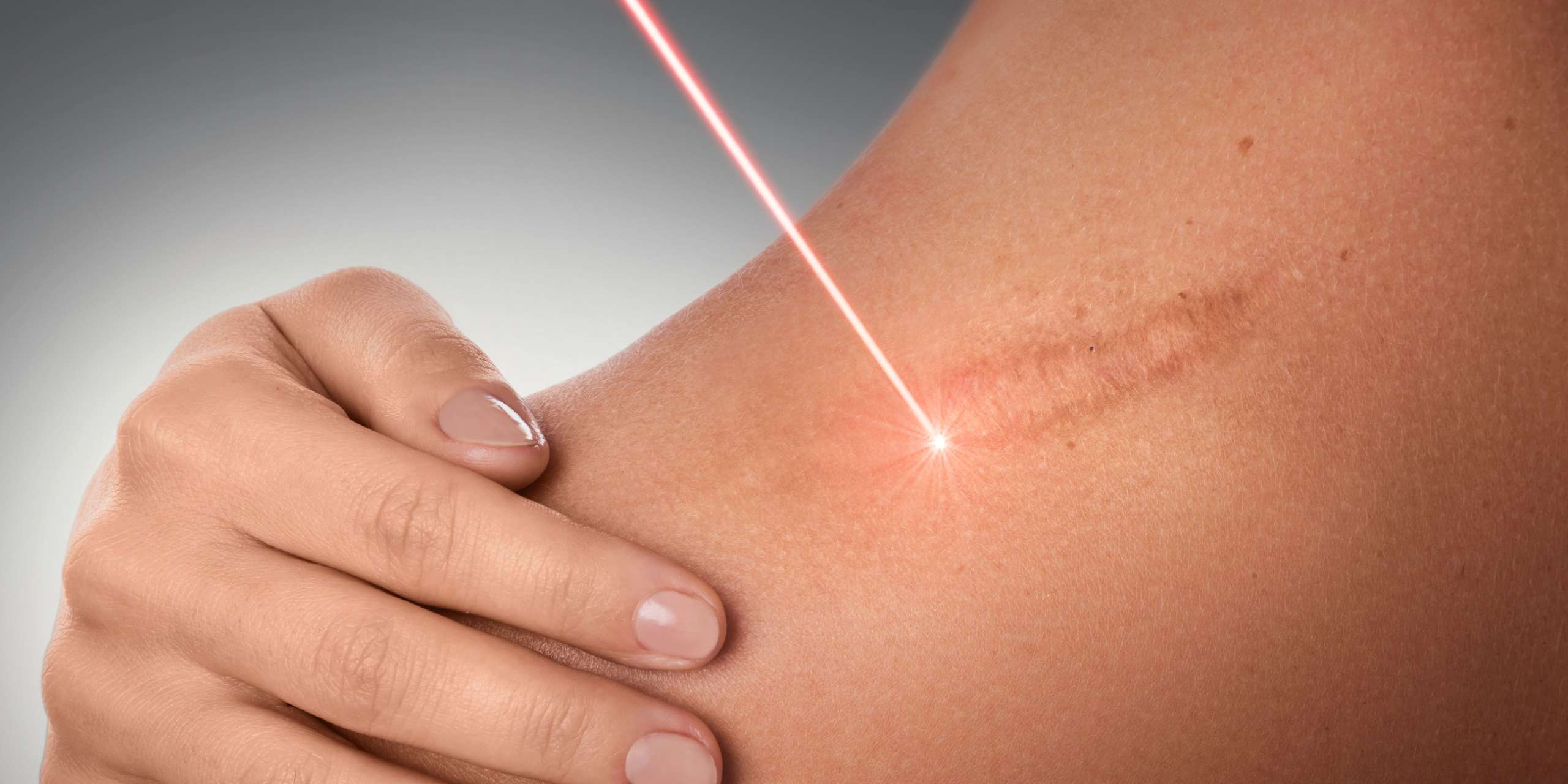What Causes Scars?
Scarring is part of the body’s natural healing process after an injury to the skin. The appearance and treatment of a scar depends on many factors. For example, the cause of the injury and size of the wound. Additionally, age, sex, ethnicity, and genetics play a role.
What Are the Types of Scars?
There are various types of scars including:
- Contracture scars – Contracture scars occur after the skin has been burned. As the name implies, these scars contract and tighten the skin, which can affect movement. Also, these scars can go deeper than the skin, sometimes affecting nerves and muscles.
- Keloid scars – Keloid scars form as a result of an extremely aggressive healing process. Additionally, they’re most common in those with darker skin. These scars extend beyond the size of the original injury. In some instances, a keloid scar can impair movement.
- Hypertrophic (raised) scars – Hypertrophic scars are thick and raised scars that most commonly appear on taut skin. They are similar to keloids, but there are differences, as they don’t spread beyond the original wound, they’re easier to treat, and they become less visible over time.
- Atrophic (depressed) scars – Chicken pox and acne can cause pit scars that look like indentations. These are most common on the face.
- Stretch marks – These occur when the skin shrinks or expands quickly. Common on areas such as the stomach, breasts, and thighs, stretch marks occur from damage to connective tissue under the skin.
- Flat scars – Oftentimes, they are red or pink in color. Additionally, flat scars may start slightly raised and smooth out as a result of the healing process.
What Are Possible Scar Removal Treatment Options?
Some scars are easily camouflaged. However, others can be extremely noticeable. If you have a scar that you can’t hide or one that you simply want to get rid of, there are several treatment options to consider. Scar treatment depends on the type of scar, size, and its severity.
Firstly, topical creams, gels, and ointments can be used to treat scars caused by cuts, wounds, or other injuries. Topical steroids are most commonly prescribed for scars.
However, raised scars can be treated using steroid injections. For example keloid and hypertrophic scars. Often, this treatment is combined with other treatment options for optimal results. Other injections, such as dermal fillers in some cases, can be used for pitted scars.
Finally, some scars can be treated with surgery.
Where Can I Get the Best Scar Removal in Arlington?
Scars can have a serious impact on your self-esteem and confidence. So, for the best scar removal in Arlington, choose board-certified dermatologist, Dr. Marjan Yousefi. Schedule an appointment to learn more about scar removal by calling us today at 703-255-5070.

